Summer Intake in Canada
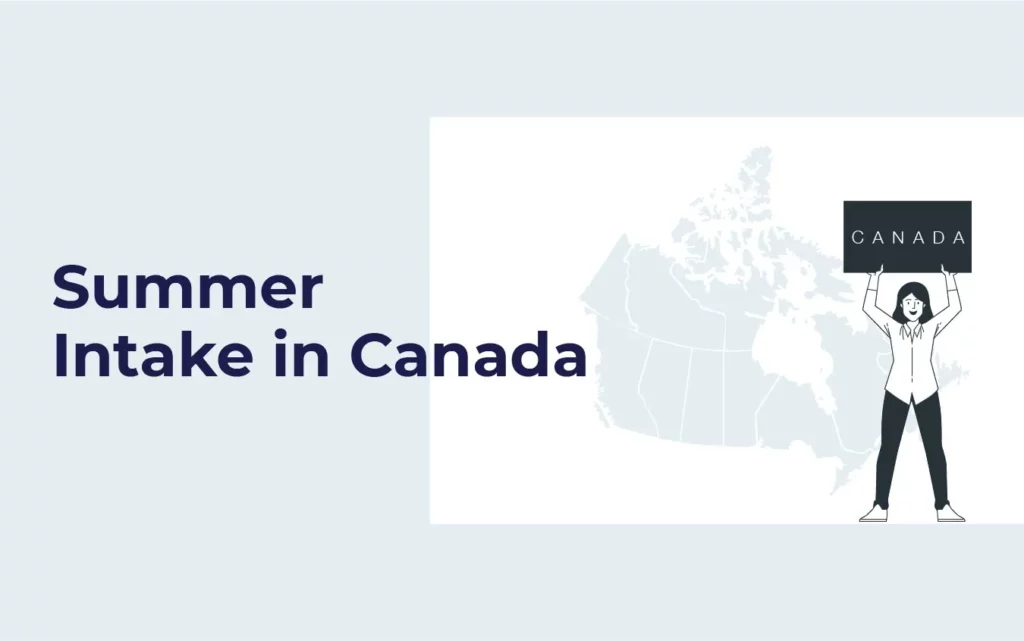
Canada has become the #1 option for students among all countries because it provides all the chances for international students to study, work, and settle. The advantages of studying in Canada are vast, and it is not just because it is a high-tech country but also because of the excellent education quality, security, accessibility, and many research possibilities it provides, among other things.
Northern America (especially Canada) has remained one of the most popular destinations for students seeking the highest quality education and a better future career. This is due to the significantly easier immigration process than other top countries. As a result, Canada has been a fantastic choice for international students. We shall highlight all the major reasons why studying in Canada may be a life-changing experience below.
WHY IS CANADA THE BEST COUNTRY TO STUDY?
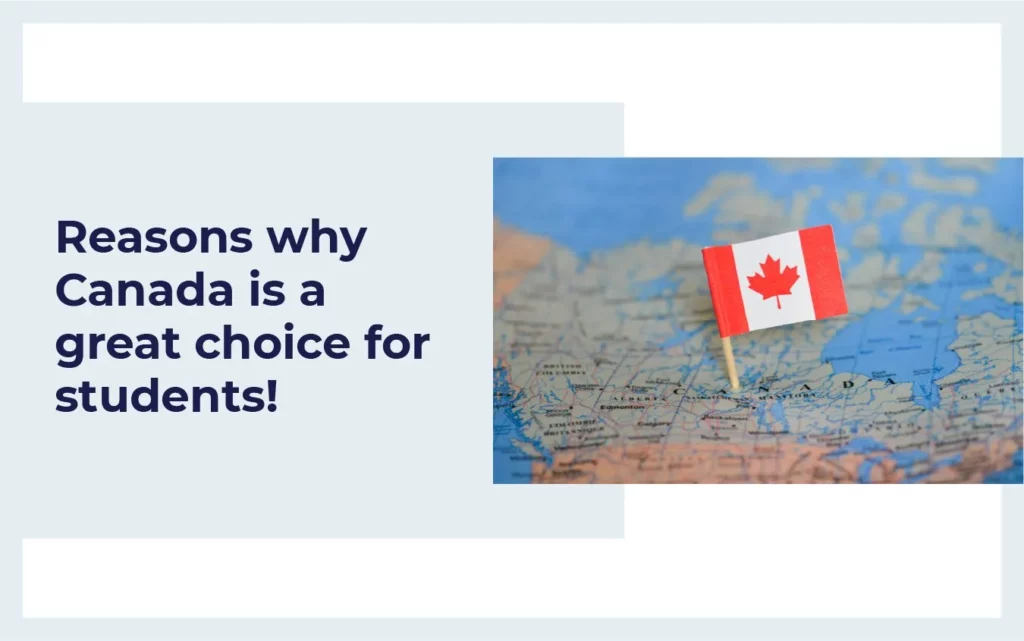
We all are very well aware that Canada is the top pick for the students who dream of studying abroad and settling there, and the reasons are undeniable. You will receive an internationally recognized education from some of the world’s best educators and intellectuals if you study in Canada. In addition, Canada has constantly been regarded as one of the world’s finest countries, and it is presently ranked one of the top countries in terms of quality of life.
- You’ll be learning alongside the finest and brightest– Educators are well-trained professionals who contribute a variety of viewpoints to the classroom. Professors in the universities have international experience. In addition, Canada is the home of a few top universities globally.
- The cost of studying and living here is reasonable– In English-speaking nations, Canada has some of the lowest university tuition fees. Whatever your financial situation, you’ll find something suitable in our varied choice of educational possibilities.
- Canada provides you with a once-in-a-lifetime experience– Canada offers an unparalleled opportunity to explore a climate, culture, and way of life. From watching the vibrant hues of our fall foliage to the mellow sounds of snowshoeing through the forest, each season and location has a lot to offer.
- Cultural variety is essential.- Cultural variety is essential.- People in Canada are incredibly Friendly and hospitable people from several ethnic groups, each with their own culture and way of life. Canada’s diverse economy is unparalleled in the world. The atmosphere encourages kindness and harmonious living.
- Earn and learn – During their semesters, all international students in Canada are allowed to work for limited hours a week, and full-time during the summer and winter holidays, to earn money to pay their expenses and purchase books.
- Job Opportunities – Canada has a higher chance of finding a job. Graduates from some of Canada’s most famous colleges work for some of the country’s best recruiters, with excellent career prospects. In Canada, the average pay is 110,000 CAD per year. In fact, with an average annual income of 155,000 CAD, the Executive MBA program is the top-earning degree in Canada.
TYPES OF INTAKE IN CANADA
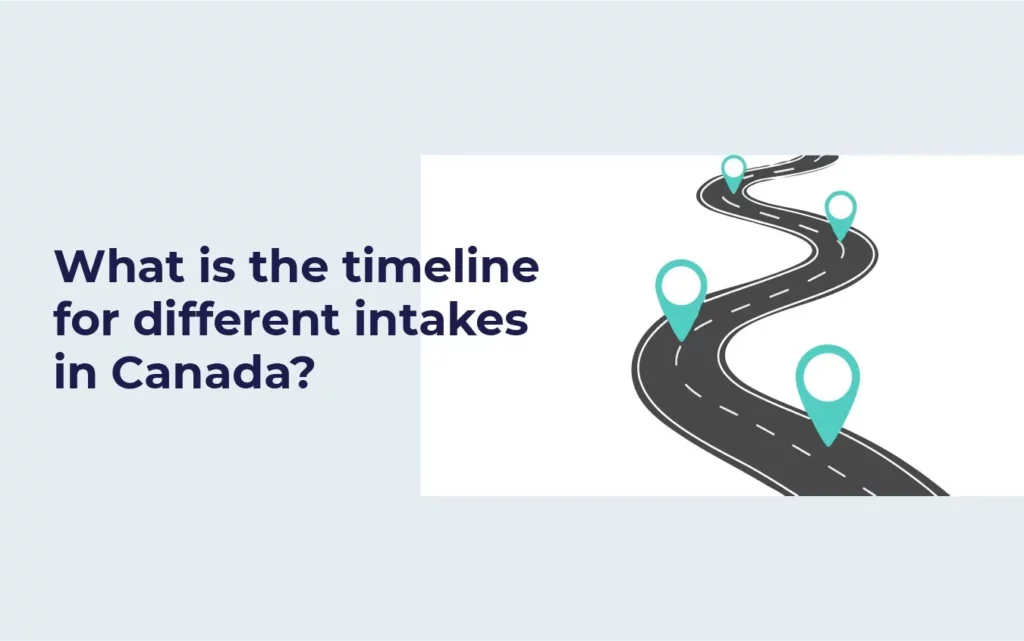
Admissions to Canadian institutions occur in specific periods known as intakes. Fall, winter, and summer admissions are the three primary intakes in Canada.
| Fall | Winter | Summer/Spring |
|---|---|---|
| This intake is the most popular since international students can apply to all the courses available, and it’s also known as primary intake, universities, and study programs. | For those who did not make it through the fall intake, this is a good choice, secondary intake. Although not all study programs are offered to students wishing to study in Canada, many are. | Compared to other intakes, just a few courses are available (mostly short-term). Similarly, the number of institutions that offer summer admission is few. |
EVERYTHING YOU NEED TO KNOW ABOUT SUMMER INTAKE IN CANADA
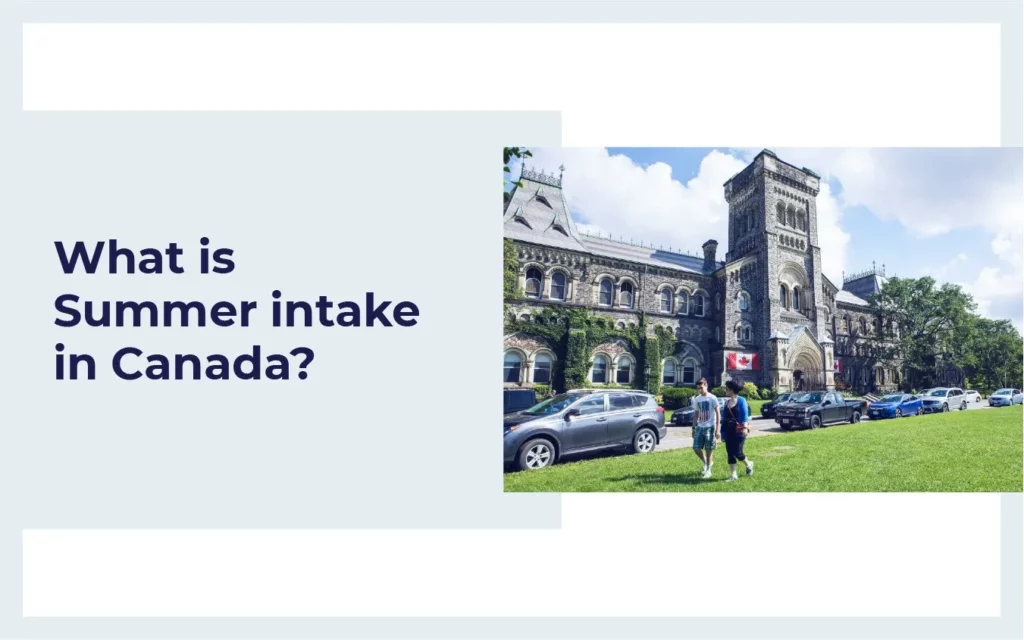
May Intake is also known as spring intake or summer intake in Canada. Every year, the Summer Intake in Canada begins in May, with application deadlines in January and February. Just a few colleges accepting applications for the May intake is a huge drawback. As a result, the may intake is the least popular of all the intakes given by Canadian universities.
There are just a few courses offered (generally short-term). The number of colleges that provide summer admission is likewise limited. One of the following factors might be to blame for the fewer applications:
- The duration is shorter.
- Courses with the most occasional options.
- Spring vacation is preferred among students.This is not a required semester.
- The majority of language programs cater to students who do not speak English.
- The candidate pool is relatively small.
- The competition is the lightest.
- Increasing your chances of receiving an offer
| Advantages | Disadvantages |
|---|---|
| There is very little competition.. | Only a few universities are open for applications. |
| The chances of getting into the school are high. | Only a few courses are offered, and they are generally only short-term. |
WHO CAN NOW APPLY FOR SUMMER INTAKE IN CANADA?
- Students who have earned a bachelor’s degree on time with no gaps in their education can apply.
- The student shouldn’t have more than ten backlogs (depending on the course, college, and category) can apply for the intake.
- Having a GMAT score that is higher than the school’s average.
IMPORTANT DATES FOR SUMMER INTAKE IN CANADA
| Date | Timelime |
|---|---|
| September- December (2021) | After choosing schools, retake the GMAT/GRE to improve the previous year’s average score. |
| January-February (2022) | Deadlines for summer admissions are in February of the same year for universities. |
| March- Early April (2022) | Keep an eye out for the school’s answer. |
| May (2022) | The course begins |
SUMMER INTAKE IN CANADA: A DOCUMENTATION
After you’ve decided on a path and narrowed down your options, the following step is to apply for admission. But first, you’ll need to gather some paperwork that will make the procedure go more smoothly.
- An international applicant must provide proof of English competence. You can take one of the examinations below and save the results for later use: IELTS, C1 Advanced, TOEFL
- SAT, ACT, GMAT, and GRE scores.
- Academic achievements.
- Certificates for extracurricular activities.
- An SOP is a document that defines what you aim to accomplish and your goals. Essay: based on your preferred university’s entrance essay questions.
- Letters of Recommendation are letters written by people who have known you for a long time.
- A valid Passport photocopy.
SUMMER INTAKE IN CANADA: A STEP-BY-STEP GUIDE
STEP – 1 – Research – Researching offers you a head start and allows you to go in front of the queue. The majority of Canadian universities are available for summer admissions. So without wasting time, you should begin working on your application as soon as feasible. You should extensively research the schools that offer the courses you want and develop a list of their summer entry deadlines.
- Career prospects
- The faculty
- Facilities
- Location
- Fees & funding
- Course structure
- Teaching and assessment methods
Suggested reading: How to choose the right MBA program?
STEP 2– After you’ve researched the schools, it’s essential to look at the school’s history, the acceptance rate, and the prior average SAT GMAT, or GRE score. Knowing this can help you understand what has to be done to attain a score higher than the previous average GMAT score.
STEP 3– Begin your application and ensure that you have all of the required papers, including SOPs, LORs, and Test Scores, as well as Academic Transcripts and your VISA.
HOW TO ACE MY APPLICATION FOR SUMMER INTAKE IN CANADA 2022?

Everything begins with the fundamentals; consider and collect all relevant information, including co-curricular activities, academics, and professional experience.
1) Summary – The majority of institutions want to see a minimum grade point average (GPA) of 3.0, which is around a B average, and a 4.0 GPA is regarded optimal to demonstrate that candidates can manage the educational standards of an MBA program. Ensure that your GPA is higher than the previous year’s GPA average.
Students aren’t often at their best in their last two years of undergraduate, and at this point, you should be prepared to respond to the admissions committee’s query concerning your low GPA.
2) GMAT – Most schools require you to sum your overall score before deciding whether or not to admit you. Canada’s best business school, Schulich, and the University of British Columbia’s Sauder School of Business require a minimum score of 550 to 600 but keep in mind that if you want to get into your desired school, always score higher than the school’s average score. We have gathered information from a few institutions that are open for summer admissions; the chart contains average GMAT and job experience.
3) LOR- Choose people who are familiar with you and can speak to your talents and successes. You want to make sure you pick people who have seen you and give that depth of knowledge. Keep track of the universities/colleges you’re applying to and the course module material of the program you’re interested in since the content will center entirely on these aspects. While seeking professional LORs, it is best to obtain them from your most recent employer. You may create a more balanced LOR by using recent references because the person referring you is familiar with you.
4) Essays – The essay section of an MBA application tells the admissions committee a little more about yourself. Essay questions differ year to year, and some programs may refer to it as a statement of intent or purpose. Generally, schools want to know why you want to pursue an MBA and why you want to do it at their institution. They want the applicant to be authentic and give us their story so that we can get to know them.”
Visit our extensive article on LOR and essays to learn more about them and obtain professional advice: https://www.mbaandbeyond.com/tips-on-lor-resume-international-experience-for-mba
SUMMER INTAKE UNIVERSITIES IN CANADA WITH THEIR ACCEPTANCE RATE.
| Fall | Winter | Summer/Spring |
|---|---|---|
| University of Alberta Capilano University Lakehead University Ontario University New York Institute of the Technology Kwantlen Polytechnic University Mount Saint Vincent University University of the Fraser Valley Brock University | 619 560 500 670 500 560 556 560 610 | 3.8 years 2 years NA 2 years 2 years, relevant field. NA 2years Full time NA Experience is not essential; however, it is preferred. |
COURSES AVAILABLE AT UNIVERSITIES
Engineering Architecture Business Hospitality Fashion Designing, Accounting, Economics, Medicine, Law, and Psychology are just a few of the disciplines offered by Canadian institutions to its students. But then business programs have different courses including,
- Communication in the workplace
- Management of a company
- Marketing for Canadian businesses Business law
- Professional business communication
- Valuation of a company
- Business financial accounting and strategic management
- Business analytics and human resource management
- Economics in the workplace
- Administration of international business
- Specialist in business entrepreneurship and business strategy
- IT and business administration
For many years, Canada has welcomed immigrants, and it remains the most popular country in which to live, work, and settle. Canada has also been named the most acceptable place to live. There is no question that no other country can provide you with the chances that Canada offers. This is why over more than 2000 people arrive in Canada each month to settle. As a student, investing in education in Canada will give the finest rewards.
Allow us to be your guiding hand on your road to the future; we will go through all of the loopholes that will prevent you from taking that first step.

As MBA and beyond advisers, we trust in you, which is why we created an organized learning style for each individual, so schedule a call today and get a free profile evaluation and become a part of Canada tomorrow.
Frequently Asked Questions
01.
What is summer intake in Canada?
May Intake is also known as spring intake or summer intake in Canada. Every year, the Summer Intake in Canada begins in May, with application deadlines in January and February.
02.
How many intakes does Canada have?
The fall intake period begins in September, referred to as September intake. January is known as January intake since it is a month for Winter intake. On the other hand, summer intake occurs in the middle of the year, notably in the month of May.
03.
Which intake is best for Canada?
Fall intake is the main intake for Canadian universities, and students are more likely to begin their studies in this intake because it puts them 4-5 months ahead of those starting in the winter intake.
04.
Should I apply for Summer Intake in Canada?
Summer intake offers its own set of advantages, such as less competition and a higher likelihood of acceptance. However, one thing to bear in mind is that fewer courses are available and fewer applications, making it the least well-known intake
05.
When should I apply for summer intake in Canada?
The application process begins in September, with deadlines in January and February of the same year that the course starts.



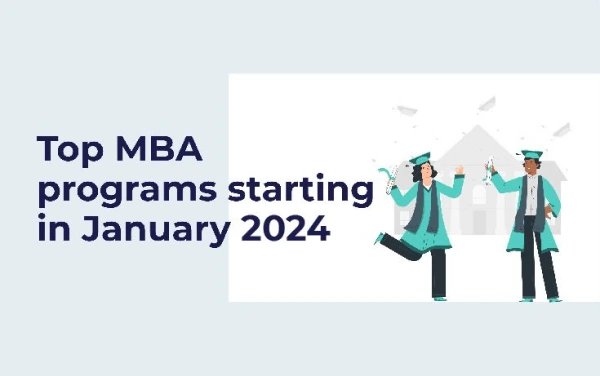

Leave a Reply